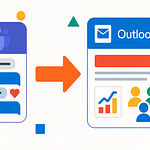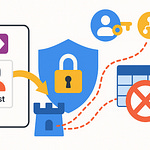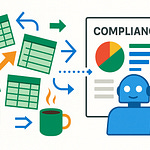Ever feel like your Microsoft 365 BizChat conversations just skim the surface? You’re asking a tool to guide important decisions, but it can’t reach into your proprietary data or core apps. That gap isn’t small—it’s the difference between generic answers and insights grounded in your actual business context.
In this podcast, I’ll show you how to close that gap. You’ll learn how to identify the right systems to connect, how to build a Copilot Connector, and how to secure it using Teams Toolkit. This is for makers and developers who know Microsoft 365 and want BizChat to work with their core apps.
Because before we can fix the problem, we need to talk about why BizChat so often feels half-blind in the first place.
Why BizChat Feels Half-Blind
Most people come to BizChat expecting it to act like a seasoned strategist, ready with answers grounded in the reality of their business. But the reason it so often disappoints is simple—it can’t see the full picture. Out of the box, it does fine with information Microsoft 365 already holds: Outlook messages, Teams chats, OneDrive files, SharePoint libraries. The problem surfaces when users ask about data living elsewhere: the CRM that runs sales, the ERP that tracks inventory and invoices, or the project tool that monitors deadlines. The second BizChat can’t reach into those systems, it starts giving half-answers that feel more like guesswork than guidance.
Take a common example. A sales manager kicks off a Monday meeting by asking BizChat about the current pipeline. Sure, BizChat will pull from recent email threads, proposal documents, maybe even meeting notes. But without access to the CRM, those numbers are incomplete. Instead of a reliable forecast, the response comes back vague, low on actual data, and largely unusable for a high-stakes decision. What should have been a fast insight becomes extra work: the manager now has to open up another system, grab the true numbers, and explain the shortfall to the team. In a moment, confidence in the tool drops.
This pattern repeats in other departments. A finance director asks for outstanding invoice totals, but without ERP visibility BizChat gives an empty report. A project manager asks when deliverables are due, but without access to the tracking system, BizChat shrugs. Each scenario ends the same way: hopping between BizChat and the real system, manually filling in the missing pieces. Ask yourself this—if your team had to double-check every BizChat answer against another tool, would they keep using it as their first stop?
That’s the practical cost: constant context switching. Staff move in and out of BizChat, copying numbers into the thread, pasting screenshots from dashboards, or rebuilding analyses that should have been automatic. Instead of a streamlined, AI-driven workflow, the experience regresses to manual patchwork. Over time, people learn not to bother asking it about the things that really matter, especially when the stakes are high. They drop back into old habits—downloads, pivot tables, or chasing data across multiple apps. Eventually, BizChat gets relegated to surface-level tasks, not because its core algorithms are weak but because it doesn’t connect to where the real answers live.
Leadership sees the ripple effects. When adoption looks patchy, they question whether the rollout was worth it. IT fields complaints that point not to bugs in the platform but to blind spots in its reach. Employees onboarded with the idea of a “smarter copilot” start treating it like a limited chat bot. That mismatch between expectation and reality creates a slow erosion of trust. Once trust erodes, momentum stalls. And when productivity results fall below the hype, organizational support weakens.
The truth is, none of this happens because BizChat lacks intelligence. It happens because it lacks visibility. The model works with what it has, but with only half the inputs, it produces half-formed results. The good news? That gap is fixable. With the right approach, you can give BizChat controlled access to the systems that matter, so answers feel specific instead of generic, and decision-making actually speeds up rather than slowing down.
And that points to a bigger question: what separates a tool that feels “helpful” from one that actually drives outcomes for the business?
The Difference Between an Assistant and a Copilot
What makes BizChat feel limited for many teams is that, at its core, it still acts more like an assistant than a copilot. On its own, it does a fine job answering questions, summarizing emails, and pulling quick notes from your Microsoft 365 environment. But those are surface-level tasks, based only on what’s already in the open. An assistant gives you commentary; a copilot works alongside you to shape real decisions. And the only way that shift happens is when the tool has controlled access to your systems of record—the data and workflows that define how your business actually runs.
This is the key distinction most organizations miss at rollout. They expect BizChat to provide deep insight out of the box, but conversational summaries alone don’t make it a copilot. Without connectors feeding it information from your CRM, ERP, or custom apps, it’s essentially a polished note-taker. With those links in place, it starts to feel like it’s truly in the decision-making process—reflecting back real numbers, live approvals, or accurate timelines instead of just rephrasing what’s already visible.
Here’s a simple mental model you can use to judge whether you’re dealing with an assistant or a copilot. First, does the AI have access to live systems, the places where critical records actually live, not just email chains or files? Second, does it respect role-based permissions so that the information returned is both secure and tailored to the person using it? And third, can it actually drive outcomes, meaning its answers resolve tasks or accelerate decision points instead of sending you somewhere else to confirm? If you can check all three boxes, then you’re getting the copilot experience. If not, you’re still in “assistant” territory.
Real examples make this distinction clearer. Picture a finance team asking BizChat for expense trends. As an assistant, it searches email attachments and shared folders to produce a rough picture of travel costs. That’s handy, but incomplete. As a copilot, with connectors into the expense management app or ledger, it delivers an accurate forecast and even flags upcoming variances in cash flow. The same shift applies in sales: instead of summarizing proposal drafts, a true copilot pulls the actual pipeline numbers from the CRM and shows where deals are stalling. One version saves you a few clicks; the other changes the way decisions get made.
It’s also worth being clear about implementation. Teams don’t have to choose a single approach—connectors span the no-code, low-code, and pro-code spectrum. A business analyst can often wire up a connector to a common SaaS app without writing much code at all. A developer can go deeper and extend custom logic through Teams Toolkit or APIs. The right route depends on your internal skills and your tolerance for complexity, not on a blanket claim that one is easier or faster. The real point is that there is a path forward no matter what level of technical depth your team operates at.
What often stalls progress is the assumption that Copilot will somehow “learn” a company’s unique data without being given structured access to it. That’s never the case. Without connectors, BizChat has no window into transaction records, product catalogs, or approval workflows. As a result, it reverts to generic answers, even though the intelligence to reason about that data is already there—waiting. Building the bridge is what unlocks the higher level of value.
And once you make that shift, the day-to-day experience changes. Users aren’t bouncing between BizChat and other applications just to backfill what it couldn’t provide. They get what they need inside the flow of the conversation. Over time, this builds confidence and trust. Questions go deeper. Adoption rates climb, because people see BizChat as a system they can rely on, not just a convenience tool. Leadership feels the difference too, because teams are able to move faster on decisions with clear, defensible data at their fingertips.
So the difference between an assistant and a copilot isn’t about flair—it’s about integration. Assistants repeat what they can see. Copilots connect to what matters most and help you steer based on it. Recognizing that contrast is essential, because the next decision you make determines whether you continue running BizChat in “assistant mode” or start enabling it to perform as a genuine copilot. And that starts with one practical step: deciding which systems are worth connecting first.
Finding the Right Integration Points
When it comes to getting real results from BizChat, the question isn’t “what can I connect?” but “which connections will change the way my teams work?” The Microsoft ecosystem is wide open, with the ability to wire up dozens of apps and data sources. But no team has the time or resources to link everything at once. That’s why the smartest move is to focus only on the integrations that deliver visible impact early. Get those right, and confidence in BizChat rises. Get them wrong, and adoption stalls.
The most common mistake is starting with the easy wins that don’t matter. It feels productive to connect a minor data source just to show something is live. But low-value integrations don’t relieve the pain points people actually feel. As a result, workflows stay fragmented, and employees walk away thinking the tool is more novelty than necessity. You don’t want “demo wins”—you want operational wins. Like wiring a house: the first outlets you choose determine whether the rooms people need most are usable or just dim.
So how do you focus on what matters? One quick way is to use a simple three-question filter. First: how often is this data needed in day-to-day work? Second: does connecting it eliminate a painful context switch—those moments when people leave BizChat to dig through another system? Third: what’s the exposure risk—is the data sensitive enough that integration requires extra governance before moving forward? If you get strong answers on frequency and friction, and manageable answers on risk, you’ve found a top candidate.
You don’t need an intensive analysis to know where to begin. Try a 60‑second exercise with any stakeholder. Ask: “When BizChat hits a wall for you, where do you go next?” The answers—whether it’s a product catalog, a project tool, or a shared document library—will highlight the rough edges everyone already knows. These breakaway moments are ideal places to start, because integrating them removes constant interruptions and builds trust in the platform.
One clear early win is targeting high‑frequency, high‑impact queries. For example, instead of looking up project timelines in a separate tracker, teams could ask BizChat directly for the latest status. That’s the kind of interaction people repeat every day, where shaving off context switching has an immediate compounding effect. Contrast that with a once‑a‑month report, and you can see why prioritizing by frequency and workflow friction is the smarter strategy.
It’s equally important to avoid chasing integrations just because they’re technically feasible. Almost any system can be connected in some way, but not every connection changes behavior. The right integrations are the ones that directly improve high‑traffic decision points. Wherever BizChat can surface real data in real time—forecast numbers, updated project milestones, status checks—it stops being an assistant and starts becoming a trusted part of the process.
This is why mapping integration points is more than a technical planning step; it’s about shaping perception. Employees don’t care if the connector was easy to build—they care that BizChat finally delivers useful answers without them leaving the conversation. And once they see it handle high‑value queries reliably, they keep coming back, which is how adoption compounds.
Of course, prioritization doesn’t mean ignoring long‑term opportunities. Lower‑frequency systems may still be worth connecting later, once the high‑value targets prove BizChat’s usefulness. But at the start, it’s all about cutting the biggest sources of friction. That’s what signals to employees and leadership that the rollout is working, and that integrating more systems is worth the time and effort.
So the real filter isn’t about technical possibility—it’s about impact. Which integrations, introduced right now, give BizChat the power to provide clear, reliable answers at the exact moment a decision is being made? Identify those, and you’ve laid the foundation for transforming everyday interactions.
And once you know where those opportunities are, the next step is understanding the actual mechanism that makes integration possible.
What Copilot Connectors Really Are
Copilot Connectors are the piece that shifts BizChat from a superficial assistant into a tool that’s actually useful for day-to-day decision-making. At its core, a Connector is a controlled integration that lets BizChat query a system of record and return scoped answers. That’s the role it plays: creating a managed bridge between AI and the trusted sources inside your business. Two facts are worth keeping in mind: Connectors don’t change the model itself—they feed it context—and they can be built along a spectrum, from no-code setups to full pro-code implementations.
Think of how your data sits today—scattered across document libraries, structured databases, cloud systems, and specialized apps. BizChat doesn’t naturally have a doorway into those environments. A Connector opens that doorway, but does it in a safe, governed way. When you ask BizChat a question, the Connector decides where that query should go—whether it’s finding live sales numbers in the CRM, invoices in the ERP, or active projects in a planning tool—and then returns the scoped information you actually need. The difference is visible. Without a Connector, BizChat gives you approximations pulled from mentions in chats or documents. With a Connector, you get live, authoritative data that reflects what the system of record says right now.
There’s a common misconception that Connectors are only for developers writing hundreds of lines of code. The reality is more balanced. For simple cases, business makers can configure integrations through no-code and low-code options. For complex or high-governance scenarios, developers step in with more advanced builds. Both roles matter. This is where Copilot Studio comes into play. It’s the environment designed to extend Microsoft Copilot with custom agents, actions, and integrations, giving teams a way to design the experiences they actually need. For code-heavy API plugin scenarios, Teams Toolkit is also supported. Developers can use it to expose secure APIs that surface data from proprietary applications directly into BizChat, with the right permissions applied. That flexibility means integrations can scale with both skill level and complexity, but it also reminds us: some integrations will require heavy developer involvement and proper governance to get right.
It’s equally important to clear up how Connectors interact with BizChat’s built-in intelligence. They don’t replace the AI that generates answers—they simply improve what the AI has to work with. Imagine asking about open purchase orders. Without a Connector, BizChat collects scattered mentions from emails or meetings and forms a vague response. Add a Connector, and suddenly BizChat queries the ERP, pulls back exact counts and statuses, and presents them in natural language. The workhorse is still the model, but the accuracy comes from the Connector.
What makes this powerful is that it isn’t restricted to Microsoft-only systems. Yes, you can link into services across 365, but just as easily you can connect HR platforms, logistics tools, or custom databases that your business depends on. The crucial part is that every one of these handoffs happens through a Connector. BizChat isn’t blindly grabbing data in the background; it’s routing questions in a managed way, respecting permissions, and returning scoped results. That’s how it remains governed while still useful.
Another part people sometimes miss: Connectors are as much about business alignment as they are about technology. Setting one up forces a conversation between IT and business teams about which questions actually matter. Do managers need live sales updates? Do finance leads need visibility into unpaid invoices? Do project teams need delivery milestones in front of them during meetings? Connectors bring those priorities into focus and make them operational. That’s one of their hidden values—they’re not just about wiring systems but about surfacing which workflows are most worth supporting.
By this point, the role of a Connector should be clear. It’s not a niche add-on or a developer hobby project. It’s the mechanism that transforms BizChat from clever summaries into a trusted copilot with access to accurate data. Without them, adoption struggles because the tool can’t answer the questions people care about. With them, it steps into a new role—reliable enough to be used in front of peers, in real decision-making scenarios, and aligned with how the business really operates.
The next natural step is to turn the idea into practice. Understanding what Connectors are is important, but what gives them value is building one and making sure it’s secured correctly.
Building and Securing Your First Connector
Building and securing your first Connector is less about coding skill and more about discipline in how you design access. Yes, there’s development involved, but the real weight is deciding what BizChat should see, how narrowly that scope is defined, and how tightly permissions are enforced. If the framework isn’t planned from the start, you’ll risk either leaking sensitive data or creating something so locked down that it doesn’t help anyone. Security here isn’t a layer you add later—it’s the structure you build on.
The main tool most teams start with is Teams Toolkit. It provides developer tooling and templates to accelerate building Copilot API plugins and integrating with your Azure resources. It gets you moving quickly on the technical side, but what it doesn’t do is make the design decisions for you. You still need to define the right entry points, align them with business needs, and make sure every call stays within tightly scoped limits. What’s tempting is to rush a demo Connector just to show off live data—only to discover later that it exposes more information than anyone expected. Those quick wins look exciting, but if role-based boundaries vanish in the process, you’ve created a problem instead of a solution.
A better approach is to treat the build as a structured sequence. Here’s a six-step checklist to keep the process grounded. Step one: define the use case in plain terms. What’s the actual business question you want BizChat to answer? Step two: map the exact queries and the minimal dataset needed—don’t give it everything if only a few fields matter. Step three: design the Connector’s surface, choosing which fields are exposed and which are off-limits. Step four: implement authentication and scoping, using identity-based access controls to enforce who can ask what and who can see which results. Step five: test with IT and business owners together, ideally with a small group of users running real queries to validate that permissions behave properly and the results actually support decision making. Step six: deploy with monitoring and governance in place so that you can track usage and adjust if something drifts out of scope. Read that out loud and it almost works as a script for designing any secure integration.
To make this tangible, let’s consider a hypothetical example. Say your team wants BizChat to summarize CRM pipeline health. The request sounds simple—pull upcoming deal sizes, stages, and owners. But raw CRM records also contain freeform rep notes that often include sensitive customer details. In this scenario, the Connector should surface the structured fields—stage, value, owner—while explicitly excluding those unstructured notes. If you just wire the Connector to everything, you’ve overexposed. If you define scope tightly, you get the insights managers need without spilling anything that violates privacy or compliance expectations. This isn’t just a technical safeguard—it’s a design principle.
Authentication is what makes scope enforcement real. Strong identity and access management ensures a user only sees what they’re allowed to see anyway. Role-based controls extend business rules into the Connector: a regional sales lead can view their territory’s pipeline, but can’t pull details on other regions. An authenticated call validates both identity and entitlements before a record is shown. These aren’t optional mechanics—they’re essential steps to uphold existing boundaries and stop sensitive data from bleeding into a chat where it doesn’t belong.
It’s also a mistake to let only one group own the process. IT might know the system architecture, but business owners know which data points are mission-critical and which should never be exposed. Leaving one side out leads to imbalance: too restricted to be useful or too open to be safe. Bringing both perspectives in from the start avoids that trap. And during testing, make sure actual users run their real-world queries. That’s how you confirm results are both accurate and appropriately scoped before anything rolls out more widely.
Once you step back, building a Connector is less about clever coding tricks and more about applied discipline. Define exactly what question you want solved, give BizChat just enough access to answer it, and enforce the same permissions your business already trusts. This combination—scope control, authentication, joint testing—is what makes the difference between a flashy demo and a reliable business tool.
When those fundamentals are in place, BizChat gains credibility. It stops being treated like a neat experiment and starts being relied on in real workflows. The real payoff isn’t just that the system can technically return answers—it’s that those answers are specific, secure, and trusted. And with that foundation, you’re ready to take a broader perspective on what all of this actually adds up to for your organization.
Conclusion
The takeaway here isn’t theory—it’s about action. The single most important next step is this: pick one high-frequency workflow, define the exact fields BizChat needs from that system, and then build a scoped Connector around it. Keep it small, prove the value once, and you’ll have a foundation your team can trust and expand from.
I’d like to hear from you—what’s the first system you’d connect? CRM, ERP, product catalog, or project tracker? Drop it in the comments. And if you want more step-by-step walkthroughs of building and securing Connectors, make sure you subscribe.











